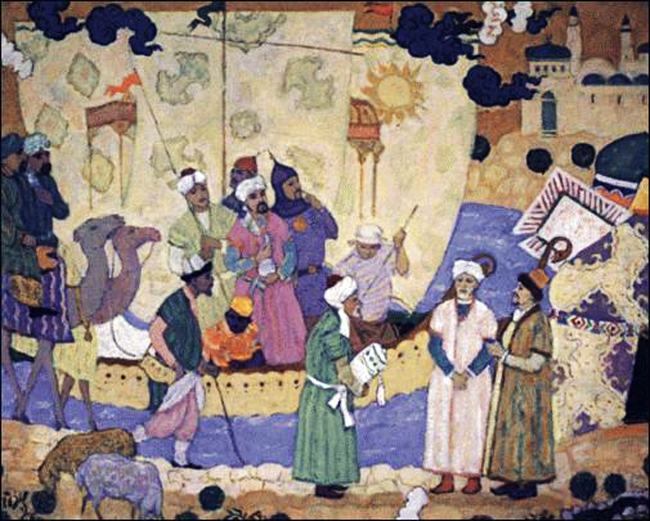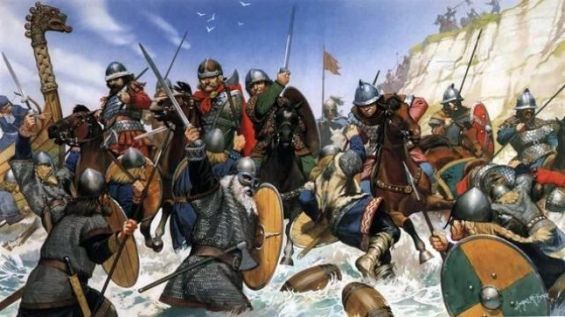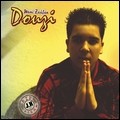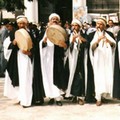Vikings and Muslims, two different worlds that we thought they never had the chance to merge. Despite the geographical difficulties, the harsh and cold weather, Muslims have laid a foot on the Scandinavian soil and apparently they have even been buried in the Vikings’ land. This was confirmed recently through a new amazing discovery. Annika Larsson, a researcher of Archeology and Ancient History at the University of Uppsala in Sweden, stumbled upon Arabic patterns while examining Viking burial clothes.
The discovery
The researcher found the words «Allah» and «Ali» embroidered on burial costumes of Vikings while working on samples of funeral clothes which marked a period of 100 years, the BBC wrote yesterday, 12th of October. Accordingly, the pieces were found in the 9th and 10th centuries in Viking Age boat graves, as well as in the chamber graves clothing of central Viking Age sites such as Birka, a city on the island of Bjorko in present-day Sweden, which was an important center that handled goods from Scandinavia, Central and Eastern Europe and the Orient.
 One of the excavated fragments made from fine silk and silver thread discovered at the two Swedish sites, Birka and Gamla Uppsala./Ph. DR
One of the excavated fragments made from fine silk and silver thread discovered at the two Swedish sites, Birka and Gamla Uppsala./Ph. DR
The samples examined by Larsson are made of fine silk and contain silver thread with the words «Allah» and «Ali» perfectly embroidered next to each others. The embroideries were clearly a Kufic script, the oldest calligraphic form developed around the 7th century in Kufa, Iraq. According to the same source, the Viking funeral clothing samples were discovered in the late 19th and mid 20th centuries and were stored in the University of Uppsala in Sweden.
Deciphering the embroideries
At first glance, Larsson’s did not realize that what she was dealing with was written in Arabic. Later on, she realized that the material and fragments came from Asia, Persia and China especially as the design was very different from the Scandinavian heritage. «I couldn’t quite make sense of them (the embroideries) and then I remembered where I had seen similar designs –in Spain, on Moorish textiles», Annika Larsson explained.
 Enlarging the patterns and looking at the reflection in a mirror revealed the word 'Allah' (God) in Arabic./Ph. DR
Enlarging the patterns and looking at the reflection in a mirror revealed the word 'Allah' (God) in Arabic./Ph. DR
The Swedish researcher successfully managed to decipher the meaning of the word «Ali» with the help of an Iranian colleague who knew what the name referred to. However, she found it difficult to decode the second pattern whose meaning remained a mystery to her. To unravel the last word Larsson decided to enlarge the letters and take a closer look at it. «I suddenly saw that the word ‘Allah’ (God) had been written in mirrored lettering».
Other findings in 2015
Larsson and her team are currently working with the university department for Immunology, Genetics and Pathology to give a scientific explanation of the geographic origins of the bodies dressed in the funeral clothes and buried on the Scandinavian soil. On the other hand this is not the first time that Swedish researchers are working on Arabic patterns.
 A Viking ring with a Kufic inscription saying "for Allah" was found inside a 9th Century woman's grave in Birka two years ago./Ph. DR
A Viking ring with a Kufic inscription saying "for Allah" was found inside a 9th Century woman's grave in Birka two years ago./Ph. DR
Two years ago, as reported by the BBC, a female silver ring was found in a tomb in Birka. The word ‘Allah’ was engraved on the piece of jewelry with a similar Kufic script. «The possibility that some of those in the graves were Muslim cannot be completely ruled out», Larsson clarified.
«We know from other Viking tomb excavations that DNA analysis has shown some of the people buried in them originated from places like Persia, where Islam was very dominant (…) However, it is more likely these findings show that Viking age burial customs were influenced by Islamic ideas such as eternal life in paradise after death».
What is astonishing about Larsson’s discovery is that it is the first time that the word «Ali» is found in a historical item. It was also surprising for Larsson also who stated that «the name of Ali is repeated again and again beside Allah», adding that : «I know Ali is highly revered by the largest Muslim minority group, the Shia, and have wondered if there is a connection».
Viking expeditions in Spain and North Africa
Following this groundbreaking discovery, it is very important to ask how the Vikings met Muslims. According to historical accounts, Vikings lived in the areas known today as Denmark, Norway, and Sweden. While the rest of Europeans were looking for land, Vikings left their homeland to earn riches raiding European countries. According to «The Cambridge History of Scandinavia», written by Peter Sawyer, a British historian of Medieval England, Vikings' expansion had reached the Iberian Peninsula.
«The Iberian Peninsula also offered rich targets, but only two Viking expeditions against it are recorded in the ninth century», Sawyer wrote on the first volume of his book. According to him, «in 844 a fleet of fifty-four ships was repulsed from Galicia and went on to attack Seville and Lisbon before returning to Aquitaine». After the first raid that targeted the two Iberian cities, the Vikings returned 15 years later. Sawyer indicates that in 859 «a larger fleet, sixty-two ships, sailed into the Mediterranean after plundering Seville and Algeciras and raided, North Africa before establishing a base in Camargue from which they plundered the Rhone Valley». Both North Africa and the Iberian Peninsula were inhabited by Muslims in the 9th century.
 Map of the Iberian Peninsula in the 9th century./Ph. DR
Map of the Iberian Peninsula in the 9th century./Ph. DR
However, the book insists that «in response to this second attack, the Caliph of Cordoba strengthened the defenses by building a new fleet and no further Viking raids on Muslim Spain are reported for a hundred years».
The journey of Ahmad Ibn Fadlan
The hypothesis suggesting that Vikings from Scandinavia met Muslims throughout history could be supported by the famous voyage of Ahmad Ibn Fadlan. The latter was a 10th century Arab traveler who served as a member of an embassy of the Abbasid Caliph of Baghdad to the King of Volga Bulgaria, a historic Bulgar state that existed between the seventh and thirteen centuries around the confluence of the Volga and Kama rivers, in what is now Russia.
 Illustration of the expedition led by Ahmad Ibn Fadlan./Ph. DR
Illustration of the expedition led by Ahmad Ibn Fadlan./Ph. DR
Ibn Fadlan was known for his account about his trip to the Volga where he met Volga Vikings and described their lifestyle including a eyewitness of a ship burial. According to Ibn Fadlan’s book «Mission to the Volga», instead of using the Bukhara route (Uzbekistan) to reach his destination, the traveler headed north crossing Oghuz turks lands on the east coast of the Caspian. Once in central Russia, Ibn Fadlan encountered Rus who lived along the coast of the northern tip of the Swedes and the Goths territories. He also dedicated a large part of his account to the Varangians, Greeks and East Slavs to Vikings, who between the 9th and 11th centuries ruled the medieval state of Kievan Rus’.
Historical accounts have signaled somehow that Vikings and Arabs met in the past but it is up to science now to prove it right. The discoveries will finally decipher an ancient part of history that has not revealed its cards yet.





 chargement...
chargement...













